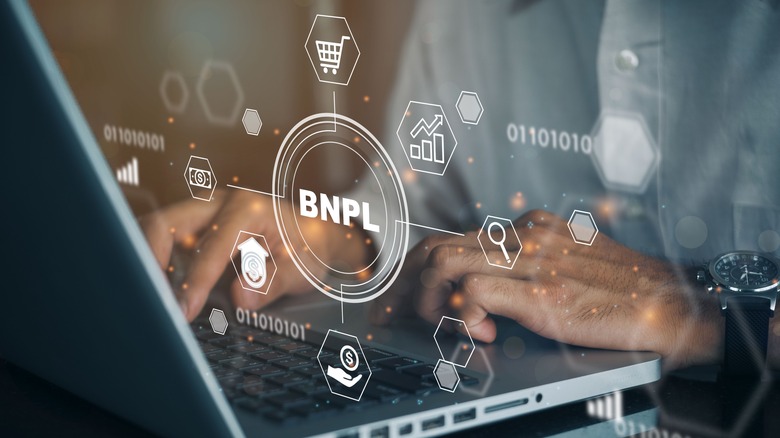Pay Later Programs Are On The Rise As Grocery Inflation Battles On
Most Americans have been feeling the pain of inflation in the grocery store checkout line over the course of the last year. The U.S. Consumer Price Index shows that during the 12-month period between Feb. 2022 and Feb. 2023, the overall cost of living rose by 6%. While some economists predict that inflation has peaked, food prices won't be coming down anytime soon. This same data shows that prices rose 9.5% in the same period.
To manage these above average food costs, more consumers have turned to Buy Now, Pay Later (BNPL) programs. BNPL is a program that splits a one-time payment into four installments. Data from Adobe Analytics shows that the number of these transactions involving groceries rose by 40% in January and February of 2023. This style of payment plan is usually reserved for single high-price purchases, such as home furniture or electronics, which saw a 38% increase and 14% decrease, respectively, over the same period.
Adobe Digital Insights lead analyst Vivek Pandya said in a statement that this pattern may be evidence that consumers are trying to shop smart in this difficult economic climate. "The rise of buy now, pay later usage for groceries tells us that consumers are likely making bigger purchases online to take advantage of special promotions and stock up on staples, thus managing living expenses in more flexible ways," said Pandya.
While they have their advantages, BNPL programs sometimes come with risks.
How does BNPL work?
Buy Now, Pay Later (BNPL) programs largely work the way their name would indicate. Customers are given a loan to buy what they need and pay the full cost in installments later.
One of the most typical examples is a four-installment plan. Four payments are made in this style over the course of six weeks. If you needed to purchase $400 worth of groceries, you would then only need to pay $100 at the time of the purchase and would then pay the rest in $100 installments. This style of payment plan typically doesn't accrue any kind of interest. So, you'll still only pay the full amount, but you'll get to spread it out over a longer time.
BNPL apps such as Klarna, Afterpay, PayPal, and Zip make it easy to make these styles of payments when shopping online. The option to use a BNPL program is often prompted during checkout, but you can also shop directly through the apps. The Zip app, for example, is accepted at Costco, Sam's Club, Trader Joe's, and other major grocery retailers, meaning there's no need to change your shopping habits to make use of these programs.
The potential dangers of BNPL
Buy Now, Pay Later (BNPL) programs can be a great option for families and individuals trying to make their money stretch. Stocking up on staple and shelf-stable foods when they're on sale can create savings that add up over time. However, there are still some risks.
Some BNPL plans will charge interest or fees. This means that you'll ultimately be paying more over time because of these additional required costs. Some programs also charge fees for late payments to the plan or use automatic withdrawals that can cause overdraft fees from your bank.
BNPLs can also make it easier to overspend, as it further distances the numbers in your bank account from what you're able to purchase. While these programs feel different from using a credit card, they are still a method of accruing debt. According to data from the Consumer Financial Protection Bureau, nearly one-quarter of Americans who have used BNPL programs say they immediately regretted using the programs because they ultimately could not afford to make the full payments.


